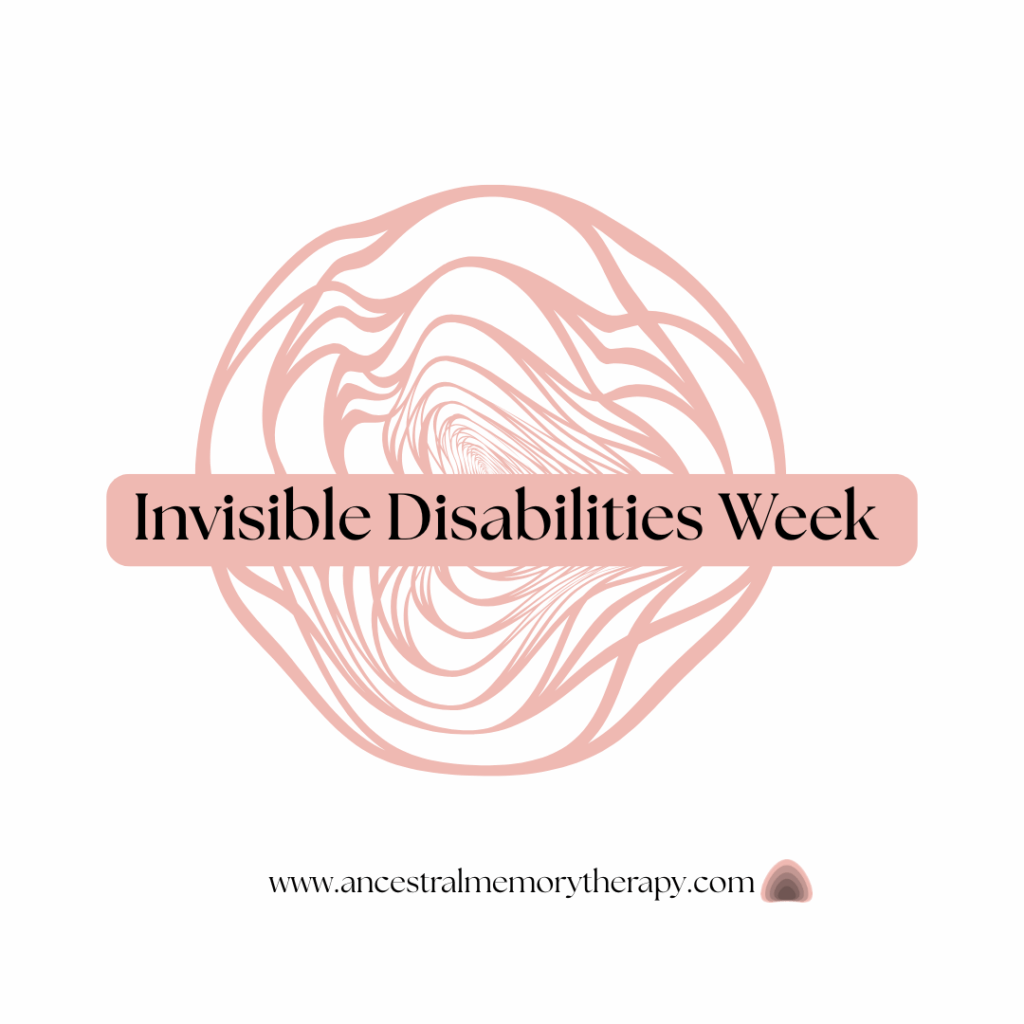Not all disabilities are evident, not all pain can be observed.
For some, having an invisible disability is akin to carrying each day a burden that nobody can see: chronic illness, autoimmune disease, mental health, neurodivergence, fatigue, trauma, or any combination of these. The world prefers visible proof first before empathy or concessions are offered. When the proof is not visible, people with invisible disabilities are far too often met with incredulity, dismissal, or silence.
As a trauma therapist, I am privileged to witness the nervous system cost of having a body and brain that feel unpredictable or un-understood. The intersection of disability and trauma runs deep, both are feelings of loss, disconnection, and sometimes betrayal by systems that were intended to nurture and care for us.
The Cost of Being Disbelieved
For clients living with invisible disabilities, disbelief can be its own form of trauma. Being told “you don’t look sick” or “you’re just anxious” can reinforce the message that one’s suffering must be hidden or minimized to be accepted. Over time, this erodes self-trust and deepens shame.
The majority of people internalize these messages and drive themselves to exhaustion, afraid of being called lazy, drama-prone, or unreliable. This constant hyperarousal keeps the body in survival mode, a nervous system jammed into fight-or-flight. The body is giving subtle messages that it is exhausted, aching, or feeling overwhelmed, yet it has been taught to ignore them.
The Trauma-Disability Connection
Hidden disability and trauma also overlap each other in ways that are not commonly acknowledged. Chronic illness, complex trauma, and institutional oppression can create or exacerbate physical illness. In the same way, chronic or occult illness can lead to secondary trauma, a long-term sense of vulnerability, isolation, and un-safety in the body.
As we witness invisible disability with a trauma-informed approach, we’re moving away from “What’s wrong with you?” toward “What has happened to you, and what does your body need to feel safe?” That’s opening the door to compassion, self-regulation, and healing — even if the disability itself doesn’t change.
Respecting invisible disabilities begins with trusting people. It means expanding our definition of accessibility to include pacing, flexible work, sensory safety, and emotional support, not only ramps and elevators. It means seeing that fatigue, brain fog, and anxiety are as disabling as physical pain, even when they don’t fit a neat visible category.
For those with invisible disabilities, self-compassion is a rebellion. It can be being able to say no without remorse, or backing away before you burn out, or finding providers who listen to you. It might also involve grieving the life you imagined for yourself, while building new kinds of existence that honor your body’s truth.
Collective Healing Requires Visibility
Creating a truly inclusive world involves a shift from performance towards presence, from “proving” disability to viewing it as one part of human diversity. It involves breaking down the ableist assumption that productivity is value, and embracing interdependence as something to be prized rather than feared.
As a therapist, a friend, and a member of society, our job is not to correct or interrogate a person’s experience, but to provide space for their reality. Healing occurs in the context of safety, validation, and compassion.
So this Invisible Disabilities Week, let’s make the unseen visible, not exposure or explanation, but empathy. Let’s believe people the first time they tell us what they need. Let’s honor bodies and minds that move differently through the world.
Because every story, visible or invisible, is worth meeting with compassion.
To talk to one of therapists about invisible disabilities
Ancestral Memory Therapy

